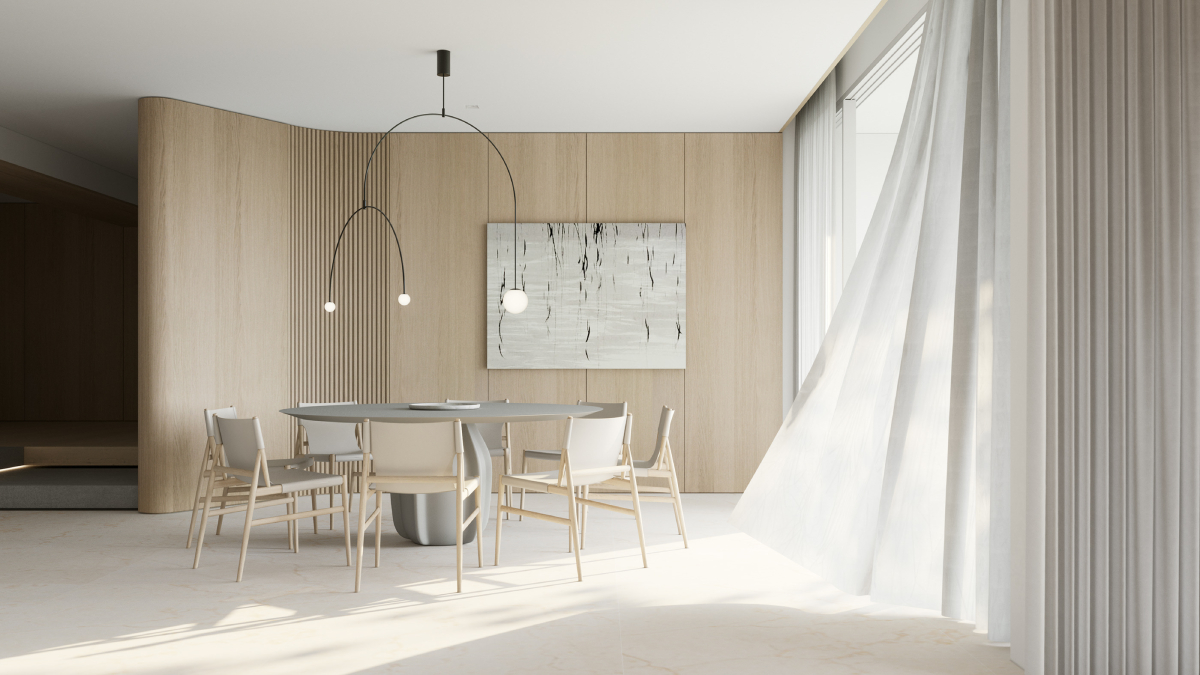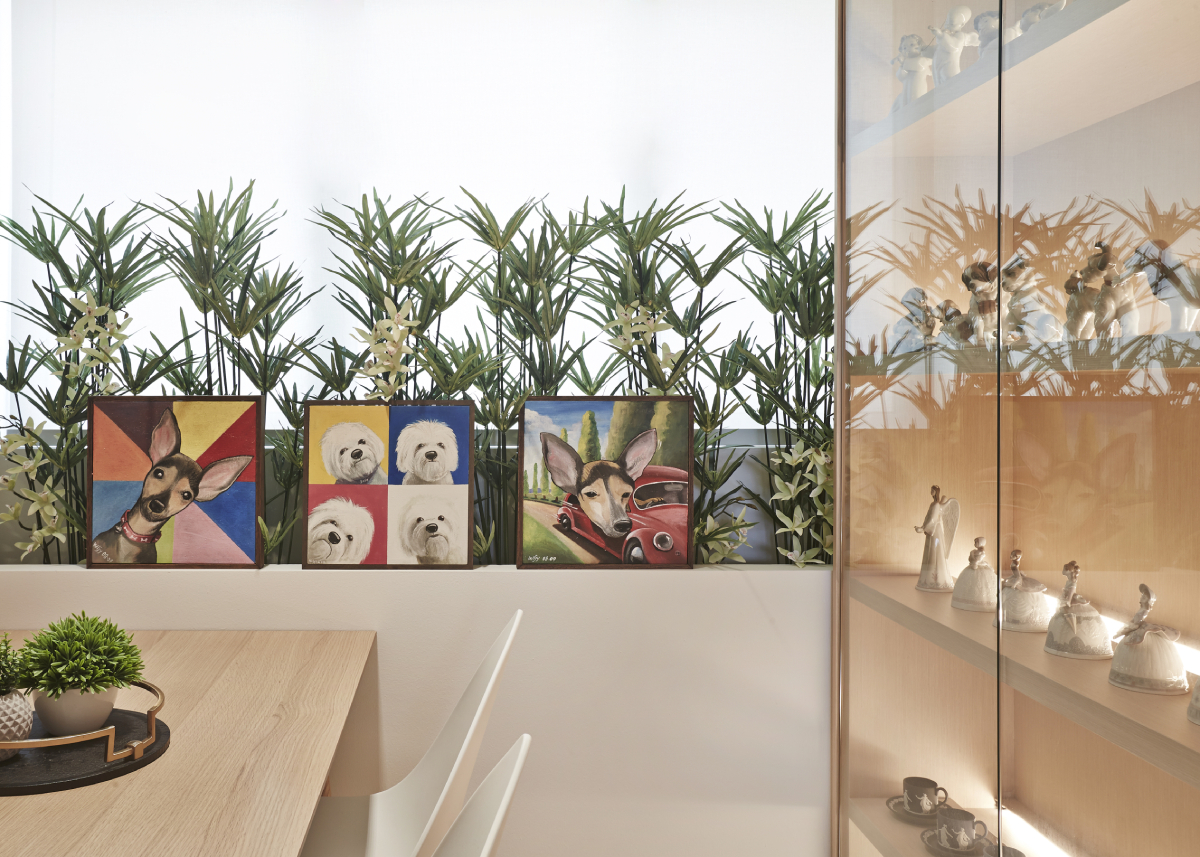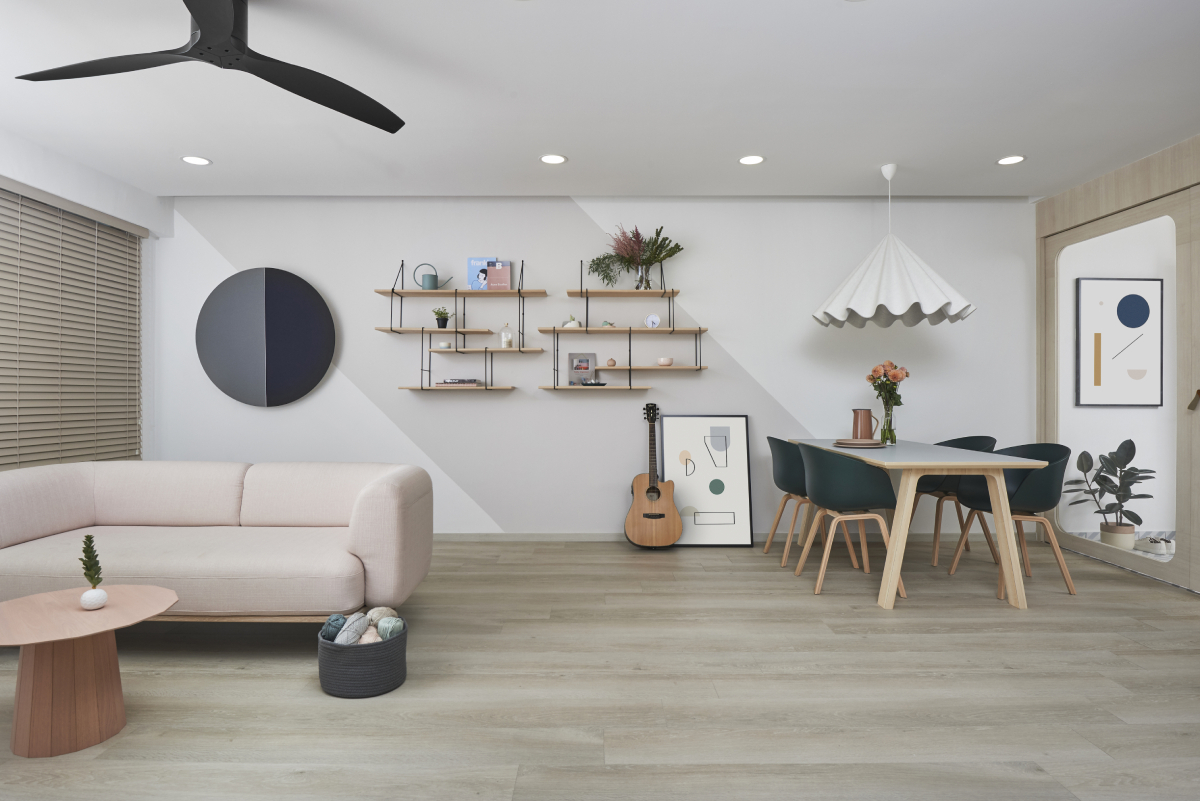Due to its calming effects and neat lines that give the impression of order, Japanese interior designs have been adopted all over the world. To recreate that relaxed and restful vibe at home, take a few pointers from the country and adorn your space with plenty of nature-inspired elements – like wooden finishes and decorative foliage – as well as lightweight furniture pieces.

Image courtesy of 0932 Design Consultants
Japanese interior design draws upon woods and whites to imbue a soothing ambience into a space, so be sure to incorporate plenty of this elements if this design style is what you’re after. Additionally, the minimalist theme works well with plenty of natural light, so keep windows and doorways uncluttered – or opt for simple, sheer curtains if privacy is a concern – to allow for maximum daylight to filter into your space.

Image courtesy of Minimo & Minimology
The Japanese love nature, evident from how they traditionally celebrate nature with elaborate garden designs. Unfortunately, in big cities such as Singapore, our stacked homes often do not allow us the luxury to have our own gardens. So what happens then? Well, we bring the outside in, of course. Whether in the form of flowers, succulents, foliage or dry flowers, dot these decorative flourishes around your interiors to add some variation into your space.

Image courtesy of Studio FortyFour
People who follow the Japanese way of life generally own as little as possible, meaning that belongings like furniture, accessories and clothing are kept to an absolute minimum. As such, if you’re aiming to create a home with this particular aesthetic, we recommend making it a habit to declutter your space from time to time. If you’re not sure where to start, a simple way to tackle decluttering is to ask yourself if you can live comfortably without that item. And if the answer is “yes”, either get rid of or donate it to someone else.
This was adapted from an article originally published in the December 2019 issue of SquareRooms.



